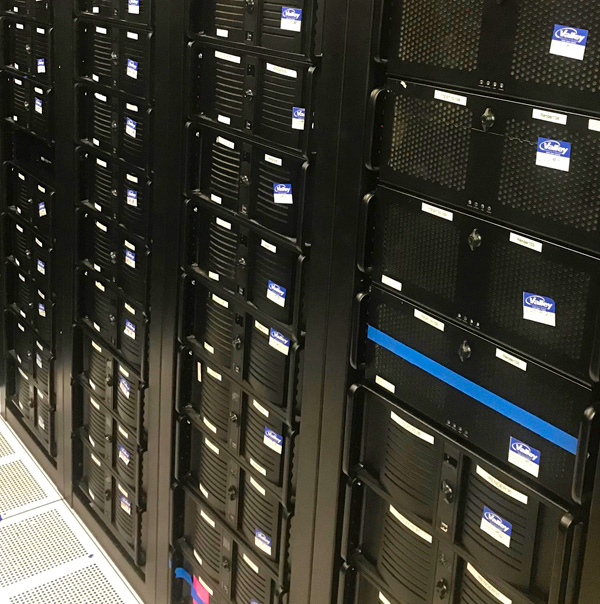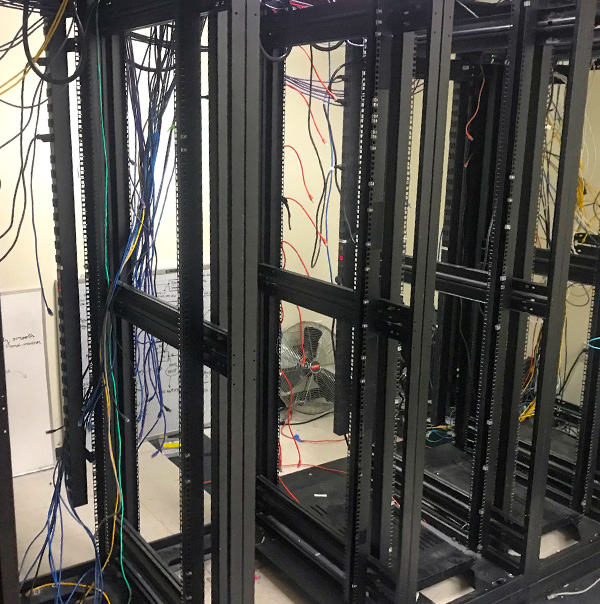In the fast-paced world of technology, the backbone of organizational operations often lies within the intricate web of servers, hardware, and data housed in data centers. However, as businesses evolve and expand, the need for IT data center relocations becomes increasingly common. Whether driven by scalability demands, technological upgrades, or a change in business strategy, these relocations are pivotal moments that demand meticulous planning and execution.
The significance of IT data center relocations cannot be overstated. These endeavors entail not just the physical movement of servers and equipment but the seamless transfer of critical systems and data that underpin a company’s day-to-day functions. The implications of a poorly executed relocation can reverberate across an organization, impacting productivity, profitability, and even customer trust.
Central to the success of any data center relocation is the paramount goal of minimizing downtime. Downtime, in this context, refers to the period during which IT systems are offline, rendering them inaccessible and disrupting normal business operations. The financial repercussions of downtime can be staggering, with potential losses mounting rapidly for each minute of inactivity. Beyond the financial aspect, downtime can tarnish a company’s reputation, eroding the trust of clients and stakeholders.
This blog aims to delve into the intricate world of IT data center relocations, shedding light on the challenges and emphasizing the critical importance of minimizing downtime throughout the process. As we embark on this exploration, we will preview key strategies that organizations can employ to ensure the successful commercial relocation of their data centers. From meticulous planning and risk assessment to the implementation of cutting-edge technologies and collaborative efforts, the strategies discussed here are geared towards mitigating the risks associated with downtime and facilitating a seamless transition.
Understanding the Challenges of Data Center Relocations

Complexity and Scale of IT Infrastructure
Data centers are the nerve centers of modern enterprises, housing the critical IT infrastructure that drives business operations. Understanding the complexity and scale of these systems is the first step in appreciating the challenges involved in data center relocations.
Overview of Typical Data Center Components
A standard data center encompasses a range of components, each integral to its operation. At its core are servers that process and store vast amounts of data. Networking equipment, including switches, routers, and firewalls, manage data traffic and ensure secure data transmission. Storage systems, like SAN (Storage Area Networks) and NAS (Network Attached Storage), are crucial for data backup and retrieval. Additionally, there are supporting systems like power supplies, including UPS (Uninterruptible Power Supplies), cooling systems to manage the heat generated by the hardware, and often complex cable networks. These components work in unison, creating an ecosystem where the failure of one element can have cascading effects on the entire operation.
Challenges in Moving and Reconnecting Intricate Systems
Relocating such a multifaceted setup is fraught with challenges. The physical movement of hardware requires careful handling to avoid damage. More complex, however, is the process of dismantling and then correctly reassembling the intricate network of interconnected systems. Ensuring that all components are reconnected properly and configured to communicate with each other is a task that requires meticulous planning and technical expertise. The process becomes even more challenging when dealing with legacy systems or when integrating new technology with existing setups.
Potential Risks and Consequences of Downtime During Relocations
Impact on Business Operations
Downtime during a data center relocation can significantly disrupt business operations. Today’s businesses rely heavily on data and IT services; any interruption can halt critical business functions. This disruption can range from the inability to process transactions or access customer data to communication breakdowns internally and with clients. For sectors like finance, healthcare, or e-commerce, where data accessibility is continuously critical, the impact can be particularly severe, affecting service delivery and customer experience.
Financial Implications
The financial impact of downtime is substantial and multifaceted. According to industry studies, the average cost of IT downtime can range into thousands of dollars per minute. This cost includes not just lost revenue from halted operations but also recovery costs, such as additional labor to rectify issues and restore systems. There’s also the potential for regulatory fines, especially in industries where continuous data availability is mandated. Furthermore, the long-term financial implications can be even more damaging. Downtime can erode customer trust and damage a company’s reputation, leading to a loss of current and potential customers, which in turn affects future revenue streams.
Planning for Success: Preparing for Data Center Relocations

Successfully navigating the complexities of data center relocations hinges on thorough planning and meticulous preparation. This section outlines key strategies for planning to ensure a smooth transition.
Conducting a Comprehensive Inventory and Assessment
Identifying Critical Systems and Equipment
Begin the relocation process by conducting a comprehensive inventory of all systems and equipment within the data center. Identify and prioritize critical components that are fundamental to daily business operations. This includes servers, storage units, networking hardware, and any specialized equipment unique to the organization’s infrastructure.
Evaluating Compatibility and Dependencies
Once critical systems are identified, assess their interdependencies. Understanding how different components interact and rely on one another is crucial. This evaluation helps in devising a strategic relocation plan that minimizes disruptions by addressing compatibility issues and ensuring seamless integration post-relocation.
Risk Assessment and Contingency Planning
Identifying Potential Risks and Vulnerabilities
Anticipate potential risks that could arise during the relocation process. These may include hardware failures, data corruption, or unforeseen compatibility issues. A comprehensive risk assessment identifies vulnerabilities, allowing the team to proactively address and mitigate these challenges before they impact the relocation.
Developing a Contingency Plan to Address Unforeseen Challenges
In conjunction with risk assessment, establish a robust contingency plan. This plan should outline specific steps to be taken in the event of unexpected challenges or failures. Whether it’s a technical glitch, a logistics issue, or any other unforeseen circumstance, having a contingency plan minimizes the impact of disruptions and ensures a swift recovery.
Establishing a Realistic Timeline
Allocating Sufficient Time for Planning and Execution
Rushed relocations often lead to oversights and errors. Allocate ample time for the planning phase to ensure a thorough assessment and a well-thought-out strategy. This includes time for equipment disconnection, transportation logistics, and post-relocation testing.
Incorporating Buffer Periods for Unexpected Delays
Acknowledge the unpredictable nature of large-scale relocations. Include buffer periods in the timeline to account for unexpected delays, whether due to technical issues, weather conditions, or unforeseen logistical challenges. This proactive approach ensures that the overall schedule remains flexible and adaptable to changing circumstances.
Implementing Best Practices for Minimizing Downtime

Minimizing downtime during data center relocations requires a strategic approach that incorporates cutting-edge technologies and meticulous planning. This section explores key best practices to ensure a smooth transition.
Utilizing Virtualization and Cloud Solutions
Benefits of Virtualization in Easing Relocation Processes
Virtualization technology plays a pivotal role in simplifying data center relocations. By abstracting physical hardware, virtualization allows for the encapsulation of applications and systems, making them more portable. This eases the relocation process by reducing the dependencies on specific hardware configurations, thus minimizing compatibility issues during migration.
Additionally, virtualization enables the creation of replicas or snapshots of existing systems, providing a safety net in case of unexpected issues during relocation. This flexibility enhances the overall resilience of the relocation process.
Leveraging Cloud Services for Seamless Transitions
Cloud services offer a scalable and flexible solution for data center relocations. Organizations can leverage Infrastructure as a Service (IaaS) or Platform as a Service (PaaS) offerings to offload certain functions to the cloud temporarily. This not only reduces the load on on-premises systems but also ensures continuous availability during the relocation process.
Cloud-based solutions provide the added benefit of redundancy and failover options, minimizing the risk of downtime due to hardware failures or unexpected issues. Integrating cloud services strategically can contribute to a seamless and resilient transition.
Prioritizing Equipment and System Migration
Sequencing the Relocation of Critical Components
Not all systems and equipment are equal in their criticality to business operations. Prioritize the relocation of critical components to minimize the impact on essential functions. This involves creating a relocation sequence that ensures crucial systems are up and running as early as possible in the new location. By prioritizing critical components, organizations can strategically allocate resources and attention during the relocation process.
Minimizing Disruptions through Strategic Migration
Strategic migration involves carefully planning the movement of systems to avoid disruptions. This includes staggering the relocation of different components, ensuring that dependencies are considered, and implementing failover mechanisms where applicable. A well-thought-out migration strategy minimizes the chances of unexpected issues and provides a more controlled and predictable relocation process.
Conducting Thorough Testing and Validation
Importance of Pre-Relocation Testing
Rigorous testing before the actual relocation is paramount. Pre-relocation testing helps identify and address potential issues in a controlled environment. This includes validating data integrity, testing failover mechanisms, and ensuring that all systems are functioning as expected before the physical relocation begins.
Ensuring Compatibility and Functionality Post-Relocation
Post-relocation testing is equally crucial for confirming that systems operate seamlessly in the new environment. This involves validating data consistency, verifying network configurations, and conducting performance tests to ensure that the relocated infrastructure meets or exceeds pre-relocation benchmarks. Thorough testing guarantees that the organization can resume normal operations with confidence and minimal risk of post-relocation issues.
Communication and Collaboration
Effective communication and collaboration are critical components of a successful data center relocation project. These elements ensure that all parties involved are informed, aligned, and working towards a common goal.
Establishing Clear Communication Channels
Internal Communication within the IT Team
Clear and consistent communication within the IT team is essential for the smooth execution of a data center relocation. Establishing a centralized communication platform, such as a project management tool or a dedicated messaging channel, can facilitate real-time updates and discussions. Regular meetings or briefings should be scheduled to discuss progress, address challenges, and align on the next steps. This internal synergy is crucial for troubleshooting, decision-making, and maintaining project momentum.
External Communication with Stakeholders and End-Users
Transparency with stakeholders and end-users is just as crucial. Keeping them informed about the relocation schedule, potential impacts, and expected downtimes can help manage expectations and reduce anxiety or frustration. Communication with these groups should be clear, concise, and jargon-free, focusing on how the relocation will affect them and what measures are being taken to minimize disruptions. Regular updates, either through email newsletters, dedicated web pages, or information sessions, can help maintain trust and understanding throughout the process.
Post-Relocation Evaluation and Optimization
The culmination of a data center relocation marks not just the physical move but the beginning of a new operational phase. This section delves into the crucial steps of evaluating the post-relocation scenario and optimizing operations for sustained efficiency.
Assessing Downtime and Performance Post-Relocation
Analyzing the Actual Downtime Against the Planned Duration
Following the relocation, it is imperative to conduct a thorough assessment of the actual downtime experienced compared to the initially planned duration. This analysis provides valuable insights into the effectiveness of the relocation strategy and execution. Discrepancies between planned and actual downtime can be indicators of areas that require attention or improvement. Understanding the reasons behind any deviations helps in refining future relocation plans.
Identifying Areas for Improvement and Optimization
The post-relocation phase offers a unique opportunity to identify areas for improvement and optimization. This includes assessing the performance of relocated systems, analyzing network stability, and evaluating the overall responsiveness of the IT infrastructure. Any issues or bottlenecks discovered during this phase should be addressed promptly to enhance the overall efficiency of the newly relocated data center.
Updating Documentation and Disaster Recovery Plans
Documenting Changes Made During the Relocation
The relocation process often involves modifications to the existing IT infrastructure, including changes in network configurations, hardware setups, and system interdependencies. Thorough documentation of these changes is crucial for future reference and troubleshooting. This documentation should capture the specifics of the new environment, ensuring that all team members have access to up-to-date information about the post-relocation configuration.
Updating Disaster Recovery Plans to Reflect the New Infrastructure
The relocation process may impact the existing disaster recovery plans, necessitating updates to align with the new infrastructure. Assess the effectiveness of the current disaster recovery strategy in the context of the relocated data center. Make necessary adjustments to ensure that recovery procedures account for the changes introduced during the relocation. This proactive measure enhances the organization’s resilience to potential disruptions and ensures a swift recovery in the event of unforeseen issues.
Hiring Valley Relocation for the Job Might Be Your Best Bet!
For a seamless and worry-free relocation experience, you’re going to have to focus on hiring a professional moving company that can take care of complex and focused aspects of relocating a business. Luckily, Valley Relocation has always been a dependable name, where you can find a range of moving services, including warehouse and storage services to provide a sanctuary for important office equipment, facility services to improve your overall moving experience, and free site surveys for a detailed and high-quality move.
To learn more and get a quote for the business, you might want to contact us now!






